Creating a new Outlook email profile
A Microsoft Outlook email profile is made up of email accounts, data files, and information about where your email is stored.
Email profiles are what Outlook uses to remember which email accounts you use and where the data for each account is stored. Each profile provides Outlook with the following information:
- What account information to use - This includes the user name, display name, email server name, and Internet service provider (ISP) account password.
- Where the email data is delivered and stored - In Outlook, data is delivered and stored either on the email server or a in .pst file on your computer. This data includes rules, messages, contacts, calendars, notes, tasks, journals, Search Folders, and other settings.
Outlook email profiles are stored in the Windows registry. When Outlook starts, it retrieves the profile information from the registry.
Note:
You use the Mail icon in your Control Panel to access options for configuring Outlook email profiles. The Mail icon won't appear unless you have Outlook installed and have run the program at least one time.
When you run Outlook for the first time, a startup wizard guides you through the process of creating a new profile, generally named "Outlook". The profile thus created runs whenever you start Outlook. Most people maintain only one profile but you might sometimes find it useful to have more than one. For example, you might want to use one profile for work mail and a second profile for personal mail. Also, if other people use the same computer that you do, their accounts and settings can be kept in separate profiles that have different names.
Note:
You cannot switch from one email profile to another while Outlook is running.
A basic profile consists of one or more email accounts and a storage file. A private individual might have an Internet email account, such as a POP3 account, while corporate workers might have a Microsoft Exchange account. Accounts of other types (including IMAP4 and HTTP accounts) can be added to any profile, and so can additional storage files (such as an Archive.pst file for keeping older messages). Sometimes extra services, such as fax and address book directories, may be included as well.
Note:
While a profile can include multiple Internet-type accounts, it can include only one Exchange account.
This article describes how to create and use a new email profile for Outlook.
Creating a new email profile
To create a new Outlook email profile, proceed as follows.
- Access your Windows Control Panel.
- In Microsoft Windows XP or Windows 7, click the Start button, and then click Control Panel.
- In Microsoft Windows 8, click the Start button, then type "Control Panel", and then, from the right hand list, click Control Panel.
- Access Mail Setup.
- In Microsoft Windows XP or Windows 7, click User Accounts, and then click Mail.
Note:
If in Classic view, double-click Mail.
- In Microsoft Windows 8, click Mail.
Note:
The Mail icon won't appear unless you have Outlook installed and have run the program at least once.
The Mail Setup dialog box opens.
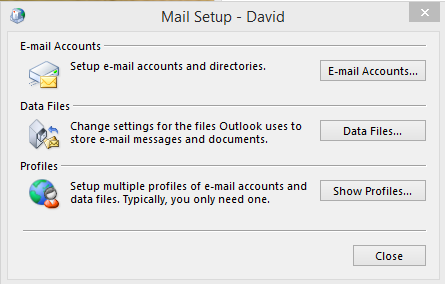
- Click Show Profiles.
The Mail dialogue box opens.
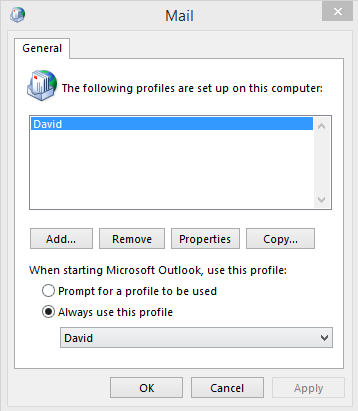
- Click Add.
The New Profile dialogue box opens.
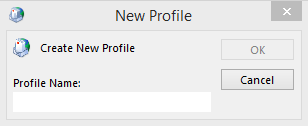
- In the Profile Name textbox, type a name for the profile, and then click OK.
The Auto Account Setup dialogue box opens, enabling you to set up an email account for the new profile.
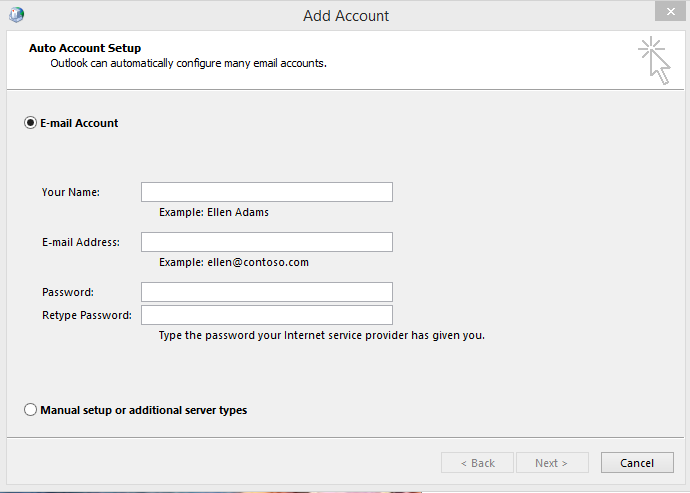
- Enter Your Name and Email Address, then type in the Password provided by your internet service provider (ISP). Retype the password in the Retype Password text box.
- Click Next.
The Add Account dialogue box opens, as Windows completes the setup of your new email account.
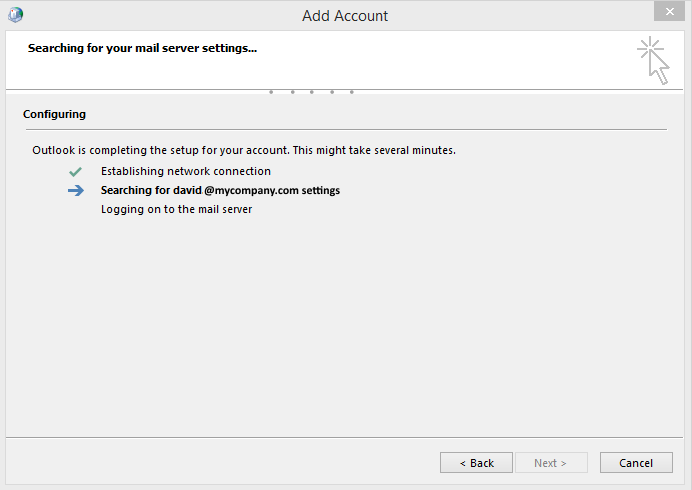
After a short wait, the account configuration is completed and the following dialogue box appears.
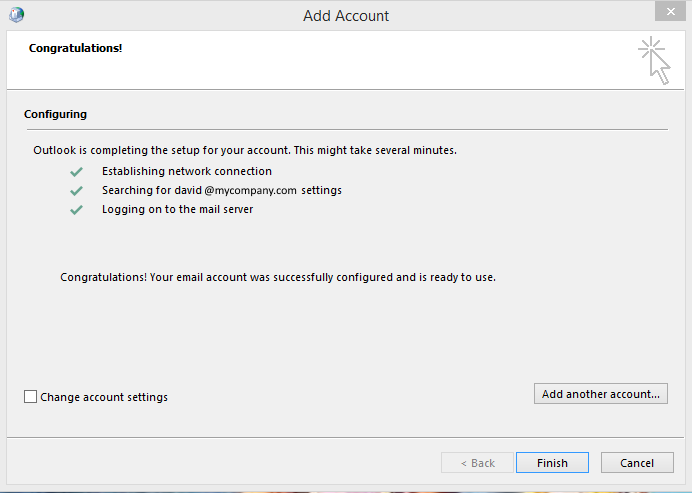
Note:
If you wish to create another account, click Add another account, and repeat Step 6 and Step 7.
Note:
If you wish to change your new account settings then tick the, Change account settings checkbox. The screen display changes slightly, and a Next option appears. Click Next, then follow on screen prompts to complete any required changes to account settings.
- Click Finish, to exit the account setup.
Using your new email profile
You may configure Outlook to always use your new profile at start up or, alternatively, to provide a prompt asking which profile you would like to use. To configure these options, proceed as follows.
- Follow Step 1 to Step 3 of Creating a new profile. The Mail dialogue box opens.
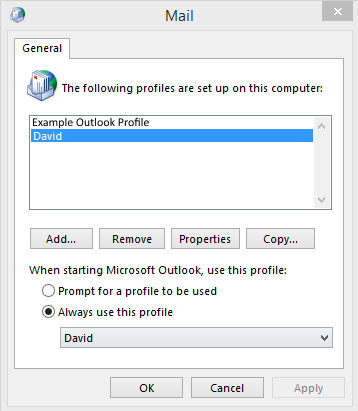
- Under When starting Microsoft Office Outlook, use this profile, select as required to either use the same profile, or receive a prompt requesting your profile selection, each time Outlook opens.
- To always use the same profile, click Always use this profile, and then click the profile that you want to use from the list.
- To receive an automatic prompt request for profile selection, click Prompt for a profile to be used. (Then each time Outlook starts, a Choose Profile dialogue box opens. Simply click the profile that you want to use from the dropdown options in the Profile Name list).


